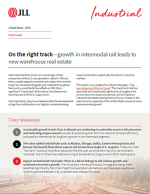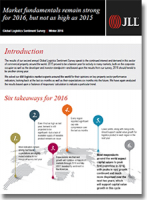A New Logistics Real Estate Landscape
The impact of multi-channel retail on logistics.
Introduction: multi-channel retail = multi-channel logistics
The growth of online retail is transforming the way consumers shop, not least by generating multiple channels through which they can research products and make purchases. At the same time, it has has added significant complexity to the logistics operations of retailers.
Instead of the relatively uncomplicated process of replenishing high street stores, multi-channel retailing is giving rise to multiple channels of distribution to service a huge range of destination points, as consumers can choose to shop at stores, order goods for home delivery or click-and-collect, and return purchased items that they do not want. The fact that the fulfilment of online orders involves delivering single items as opposed to larger bulk orders for stores adds another layer of complexity.
From a different perspective, the growth of multi-channel represents a further change in retail supply chains, which over the past 30 years have seen the ‘balance of power’ shift from manufacturers to retailers to consumers. In this process, the supply chain has changed from a ‘push’ supply chain, in which manufacturers produced goods for retailers to sell, to a ‘pull’ demand chain, driven by consumer demand.
With consumers very much in control and becoming ever more demanding in their expectations, logistics is becoming critical to delivering the best multi-channel customer service. At present, many retailers are grappling with what this change will mean for their business, their retail portfolios, their logistics operations and their warehouse requirements. Understanding this ‘new normal’ and how to deliver improved customer service at lower costs will be key to retailer profitability - a huge challenge but a huge opportunity for retailers that get it right.
Amid this uncertainty, one thing seems certain. Multi-channel retail is here to stay, and it is going to drive significant change in logistics and logistics real estate markets.
This white paper is structured to address a number of key questions:
- What are the evolving logistics models to service the growing volume of online orders?
- What types of logistics real estate are being demanded by retailers and others to meet this growth?
- What does multi-channel mean for investors in logistics real estate?
- What are the key potential future trends?
- What are the implications for retailers, other real estate occupiers, developers and investors?
What’s Related




Favorites





